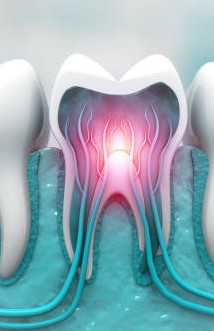What Is a Dental Floss?
Dental floss is a thin, nylon string that is used for cleaning the spaces between teeth, where a toothbrush cannot reach. Flossing is an essential oral hygiene practice that helps remove plaque, food particles, and bacteria that may accumulate in between teeth, causing dental cavities or gum disease. In this article, we will discuss the various types of dental floss, the correct method of flossing, as well as the advantages and disadvantages of regularly flossing.
What Are The Types Of Dental Floss?
| Types Of Dental Floss |
| -Waxed and Unwaxed Dental Floss |
| -Flavoured and Unflavoured Dental Floss |
There are several types of dental floss available in the market, including waxed, unwaxed, flavored, and unflavored floss.
Waxed floss is coated with wax, which makes it easier to slide between teeth. Unwaxed floss is not coated and may be thinner than waxed floss, making it ideal for individuals with tight teeth gaps. Flavored floss comes in various flavors, like mint, cinnamon, and even bacon flavor. Some people prefer flavored floss over plain floss because they find it more pleasant. Unflavored floss, also known as the dental tape, is generally thicker and wider than regular floss, making it ideal for people with large gaps between teeth.
Related Article :- Dental Floss vs Interdental Brushes
How To Use Dental Floss?
The correct method of flossing involves wrapping an 18-inch piece of floss around your middle fingers and using your index fingers and thumbs to control the floss. Gently slide the floss in between your teeth, following the curve of the tooth, and move it up and down to remove any food particles or plaque. Be sure to go gently in between teeth, particularly if you have sensitive gums, to avoid injury to the gums or causing bleeding.

Advantages Of Using Dental Floss
The advantages of regularly flossing include removing plaque from the teeth and gums, reducing the risk of tooth decay, gum disease, and bad breath. Regular flossing can also help remove stains from teeth, particularly in areas that your toothbrush cannot reach. By removing food particles between teeth, you can also prevent the build-up of bacteria that can lead to tooth decay.
Disadvantages
There are some potential disadvantages to flossing. Flossing can cause gum bleeding, particularly if you are not used to the process. However, this will usually stop after a few days of flossing regularly. Flossing can also irritate your gums if done too hard or too often, leading to gum recession or even tooth loss in severe cases. Additionally, flossing requires additional time and effort, which can be challenging for individuals with busy schedules.
Regular flossing is an essential part of a good oral hygiene routine. By using the correct method of flossing and choosing the right type of floss for your teeth, you can enjoy the benefits of cleaner teeth, fresh breath, and reduced risk of gum disease and tooth decay. However, it is essential to be gentle when flossing and not to overuse it, as this can lead to gum bleeding and irritation. Speak with your dentist for recommendations on the right type of floss for your teeth and how often you should floss.
What Are Dental Floss Picks?
Dental floss picks are small handheld devices that are designed to help people floss their teeth more conveniently and with greater ease. They typically consist of a small plastic handle that has a short length of dental floss strung between two prongs or arms.

Why Are Dental Floss Picks Preferred ?
There are a number of reasons why people might choose to use dental floss picks instead of traditional dental floss. For one thing, floss picks are generally more portable and compact than a full roll of floss, making them a great option for travel or for use at work or school. Additionally, floss picks can be easier to manipulate than traditional floss, particularly for people with dexterity issues, smaller mouths, or braces.
Another potential advantage of floss picks is that they may be less wasteful than traditional floss, as people may be more likely to use up a full length of floss before discarding it when using a floss pick. However, it should be noted that some floss picks come with disposable arms, which could negate this potential benefit.
When using floss picks, it’s important to follow good oral hygiene practices to ensure that you’re cleaning your teeth and gums effectively. This means flossing at least once a day, taking care to use a clean section of floss for each tooth, and being gentle to avoid injuring your gums. It’s also important to visit the dentist regularly for cleanings and checkups to catch any potential oral health issues early on.
Related Article :- Dental Floss vs Interdental Brushes
Conclusion
Dental floss picks can be a convenient and effective tool for maintaining good oral hygiene. While traditional dental floss may still be the gold standard for thorough teeth cleaning, floss picks can be a great alternative for people who struggle with traditional floss or who are on the go. As with any oral hygiene tool, it’s important to use floss picks properly and in conjunction with other good oral hygiene habits.




One thought on “What Is Dental Floss And How To Do Flossing?”